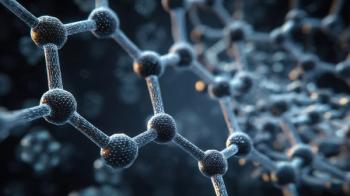Key Points:
· Through the use of liquid chromatography (LC) and mass spectrometry (MS)-based metabolomics analysis, celery leaves were found to contain a rich variety of bioactive compounds—such as phenolic acids, flavonoids, glycosides, and isoflavones—with potential neuroprotective effects against Alzheimer’s disease (AD), particularly targeting amyloid-beta (Aβ) toxicity.
· The chemical complexity of celery extract allows for multiple pharmacological actions, including antioxidant, anti-inflammatory, and enzyme-inhibitory activities, which could help mitigate various mechanisms involved in AD-related neurodegeneration.
· The study demonstrated celery leaf extract’s inhibitory effects on Alzheimer’s-relevant enzymes (GSK-3, COX, cholinesterases) and suggests future research to explore the synergistic effects, bioavailability, and therapeutic potential of its phytochemicals.
Researchers at Uskudar University in Istanbul, Turkey, explored the neuroprotective potential of Turkish celery leaves—an often-overlooked source rich in phenolic and flavonoid compounds—against amyloid-beta (Aβ) toxicity, a major contributor to Alzheimer’s disease (AD). Liquid chromatography (LC) and mass spectrometry (MS)-based metabolomics analysis of celery extracts uncovered the presence of a wide assortment of secondary metabolites, including phenolic acids, hydroxycinnamic acid, flavonoids, flavonoid O-glycosides, flavonol, glycosides, and isoflavones. A paper based on this work was published in Molecules (1).
The most prevalent neurodegenerative disease primarily affecting elderly individuals worldwide, AD is a progressive and irreversible loss of mental abilities such as memory, direction, judgment, language, and the ability to learn new things. AD development is believed to be influenced by primary pathogenic pathways: amyloid-beta (Aβ) peptide deposition, tau hyperphosphorylation with forming tau neurofibrillary tangles, cholinergic deficit, oxidative stress, and chronic neuroinflammation (2,3). The cholinergic hypothesis suggests that aging-related cognitive impairment is due to diminished cholinergic activity in the central nervous system (4). Abnormal central cholinergic changes can result in abnormal tau protein phosphorylation, nerve cell inflammation, cell death, neurotransmitter imbalance, and other harmful events, though the exact mechanism is unknown (5).
Driven by growing global interest in the neuroprotective potential of functional foods and their phytochemical constituents, previous studies have been focused on the neuroprotective properties of polyphenols, flavonoids, terpenoids, and other secondary metabolites derived from plants (6). These properties present a variety of pharmacological actions, including antioxidants, anti-inflammatory, and enzyme-inhibitory effects, which may collectively mitigate AD-related neurodegeneration (7,8).
Widely cultivated for its edible stalks, leaves, and roots, celery (Apium graveolens L.) is native to the Mediterranean, but now grows worldwide in various climates. The phenolic and flavonoid content of celery extract has been studied globally, with reported levels varying—likely influenced by differences in extraction methods, environmental conditions, and plant genotype. The aerial parts and roots of Egyptian celery were used in the identification and characterization of a variety of chemically varied metabolites, including phenylpropanoids, phthalides, coumarins, furanocoumarins, and sesquiterpenes (9,10).
Chromatographic separation on powdered celery leaf samples was performed using a high performance liquid chromatography–quadrupole time-of-flight-mass spectrometry (HPLC–QTOF-MS) system; data acquisition was conducted in both MS and MS/MS modes. Fifteen phenolic compounds were tentatively identified, including phenolic acids, hydroxycinnamic acid, flavonoids, flavone, flavonoid O-glycosides, flavonol glycosides, and isoflavones from phytochemical classes. Large concentrations of chlorogenic acid and rutin were found among them, followed by p-coumaric acid (1).
While there remains considerable scope for further investigation into the phytochemical composition of celery leaf extract and its relevance to Alzheimer’s disease (AD) prevention and treatment, the researchers believe that their findings demonstrate that the extract exhibits inhibitory effects on key targets involved in AD pathology, including GSK-3, COX enzymes, and cholinesterases, which suggests a promising multi-target therapeutic approach. Given the chemical complexity of celery, future studies should focus on elucidating the individual and synergistic effects of its phenolic compounds. Extensive in vitro studies are warranted to define the specific molecular interactions between these compounds and targets such as COX-2 and GSK-3β, while in vivo research should explore their pharmacokinetics, bioavailability, and neuroprotective potential in AD models (1).
References
1. Mohamud Dirie, L.; Yurdakul, T.; Isik, S.; et al. Exploring the Neuroprotective Properties of Celery (Apium graveolens Linn) Extract Against Amyloid-Beta Toxicity and Enzymes Associated with Alzheimer's Disease. Molecules 2025, 30 (10), 2187. DOI: 10.3390/molecules30102187
2. DeTure, M. A.; Dickson, D. W. The Neuropathological Diagnosis of Alzheimer's Disease. Mol. Neurodegener. 2019, 14 (1), 32. DOI: 10.1186/s13024-019-0333-5
3. Nowak, D.; Slupski, W.; Rutkowska, M. New Therapeutic Strategies for Alzheimer’s Disease. Postep. Hig. I Med. Dosw. 2021, 75, 474–490. DOI: 10.5604/01.3001.0014.9532
4. Gasiorowska, A.; Wydrych, M.; Drapich, P.; et al. The Biology and Pathobiology of Glutamatergic, Cholinergic, and Dopaminergic Signaling in the Aging Brain. Front. Aging Neurosci. 2021, 13, 654931. DOI: 10.3389/fnagi.2021.654931
5. Prabha, S.; Sajad, M.; Hasan, G. M.; et al. Recent Advancement in Understanding of Alzheimer's Disease: Risk Factors, Subtypes, and Drug Targets and Potential Therapeutics. Ageing Res. Rev. 2024, 101, 102476. DOI: 10.1016/j.arr.2024.102476
6. Scuto, M.; Majzúnová, M.; Torcitto, G.; et al. Functional Food Nutrients, Redox Resilience Signaling and Neurosteroids for Brain Health. Int. J. Mol. Sci. 2024, 25 (22), 12155. DOI: 10.3390/ijms252212155
7. Merecz-Sadowska, A.; Sitarek, P.; Zajdel, K.; et al. Genus Sambucus: Exploring its Potential as a Functional Food Ingredient with Neuroprotective Properties Mediated by Antioxidant and Anti-Inflammatory Mechanisms. Int. J. Mol. Sci. 2024, 25 (14), 7843. DOI: 10.3390/ijms25147843
8. Rojas-García, A.; Fernández-Ochoa, Á.; Cádiz-Gurrea, M. D. L. L.; et al. Neuroprotective Effects of Agri-Food By-Products Rich in Phenolic Compounds. Nutrients 2023, 15 (2), 449. DOI: 10.3390/nu15020449
9. Derouich, M.; Bouhlali, E. D. T.; Hmidani, A.; et al. Assessment of Total Polyphenols, Flavonoids and Anti-Inflammatory Potential of Three Apiaceae Species Grown in the Southeast of Morocco. Scientific African 2020, 9, e00507. DOI: 10.1016/j.sciaf.2020.e00507
10. Ahmed, S. S. T.; Fahim, J. R.; Youssif, K. A.; et al. Comparative Study of the Chemical Composition and Anti-Proliferative Activities of the Aerial Parts and Roots of Apium graveolens L. (Celery) and their Biogenic Nanoparticles. S. Afr. J. of Bot. 2022, 151, 34–45. DOI: 10.1016/j.sajb.2021.11.002





